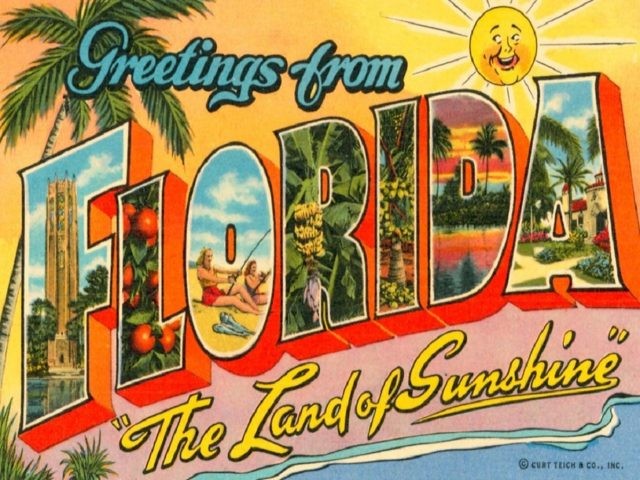Tuesday night, President-elect Donald Trump defeated Hillary Clinton in Florida’s presidential contest for its 29 electoral votes by a margin 4,605,515 to 4,485,745, which was roughly a difference of 1.3 percent.
A closer look at the numbers shows it was not a single issue that won the day for Trump in the Sunshine State, but a number of factors including turnout, suburban voters and a boost from south Florida’s Cuban-American voters.
Florida’s Cuban Vote Still Goes for Trump Despite Accusations of Violating U.S.-Cuba Embargo
At the end of September, Newsweek magazine’s Kurt Eichenwald reported Trump had “secretly conducted business in Communist Cuba during Fidel Castro’s presidency.”
Clinton used the allegation on the trail and in radio ads and some thought they would harm Trump with Cuban-American voters that traditionally voted Republican.
However, according to two exit polls, one conducted by CNN and another by Latino Decisions, Trump won a majority of the Cuban-American vote at 54 percent and 52 percent respectively. That was an improvement from 2012 Republican presidential nominee former Gov. Mitt Romney’s effort of 47 percent, according to the Miami Herald.
South Florida Turnout Underperformed Compared Statewide Average: If Hillary was going to win Florida on election night, she needed a tremendous get-out-the-vote effort in the south Florida Democratic strongholds of Miami-Dade, Broward and Palm Beach Counties.
While turnout was over 74 percent across Florida, turnout in Miami-Dade, Broward and Palm Beach Counties was at 72 percent, 70 percent and 74 percent respectively.
Late in the afternoon on Election Day, Trump and his surrogates expressed concern that turnout in Panhandle counties was light and that it could lessen his chances. Turnout was lower than the Trump campaign had hoped for in the far western Escambia County – where Trump hosted two rallies in the run up to Election Day — at 73 percent.
Bay and Okaloosa Counties, two other major populated counties in the heavily Republican panhandle, exceeded turnout at 74 percent and 75 percent, respectively. Santa Rosa County, however, far underperformed with only 67 percent turnout.
Suburban Voters Won the I-4 Corridor for Trump
Nearly every presidential election cycle, pundits focus on swing voters in Florida’s I-4 corridor, which runs from the Tampa-St. Petersburg area, northeast through Orlando and up to Daytona Beach on the state’s eastern coast.
Dr. Susan MacManus, a political science professor at Tampa’s University of South Florida, attributed Trump’s I-4 corridor success to suburban vote, saying it was enough to win the day over the Democratic-leaning precincts in the urban centers of Tampa and Orlando.
“The suburban vote was much heavier than usual,” MacManus said to Tampa ABC affiliate WFTS on Wednesday. “It’s how Donald Trump won the I-4 corridor 51-45 percent.”
Hillsborough County Is No Longer the Bellwether: Late in the campaign, Donald Trump brought big crowds to the MidFlorida Amphitheatre and the Florida State Fairgrounds in Tampa. But it wasn’t enough to give him Hillsborough County, home to Tampa.
As went Hillsborough County, so went the country in the past four presidential elections, but that trend ended Tuesday night when Clinton won the county by 40,000 votes. Trump, however, did manage to flip nearby Pinellas County, home to St. Petersburg with a victory of over 5,000 votes. Pinellas had gone Democrat in three of the last four elections, the exception being the 2004 contest between George W. Bush and John Kerry.
No Down-Ballot Trump Effect on Marco Rubio
Sen. Marco Rubio (R-FL) cruised to an easy win over his Democratic opponent Rep. Patrick Murphy (D-FL) for reelection.
Rubio’s race was called much earlier than Florida was for Trump.
As of Wednesday afternoon, Trump’s margin of victory was nearly 120,000 votes. Rubio’s margin of victory over Murphy was nearly 717,000. Overall, there were 200,000 voters that voted for Rubio that did not vote for Trump.
Almost immediately after announcing his candidacy for U.S. Senate after dropping out of the presidential race through Election Day, Rubio maintained a lead in polling over Murphy.
Rubio never fully embraced Trump’s candidacy, despite endorsing him as the GOP nominee. Murphy attempted on numerous occasions to tie him to Trump, but in the end it had no effect.
Follow Jeff Poor on Twitter @jeff_poor

COMMENTS
Please let us know if you're having issues with commenting.